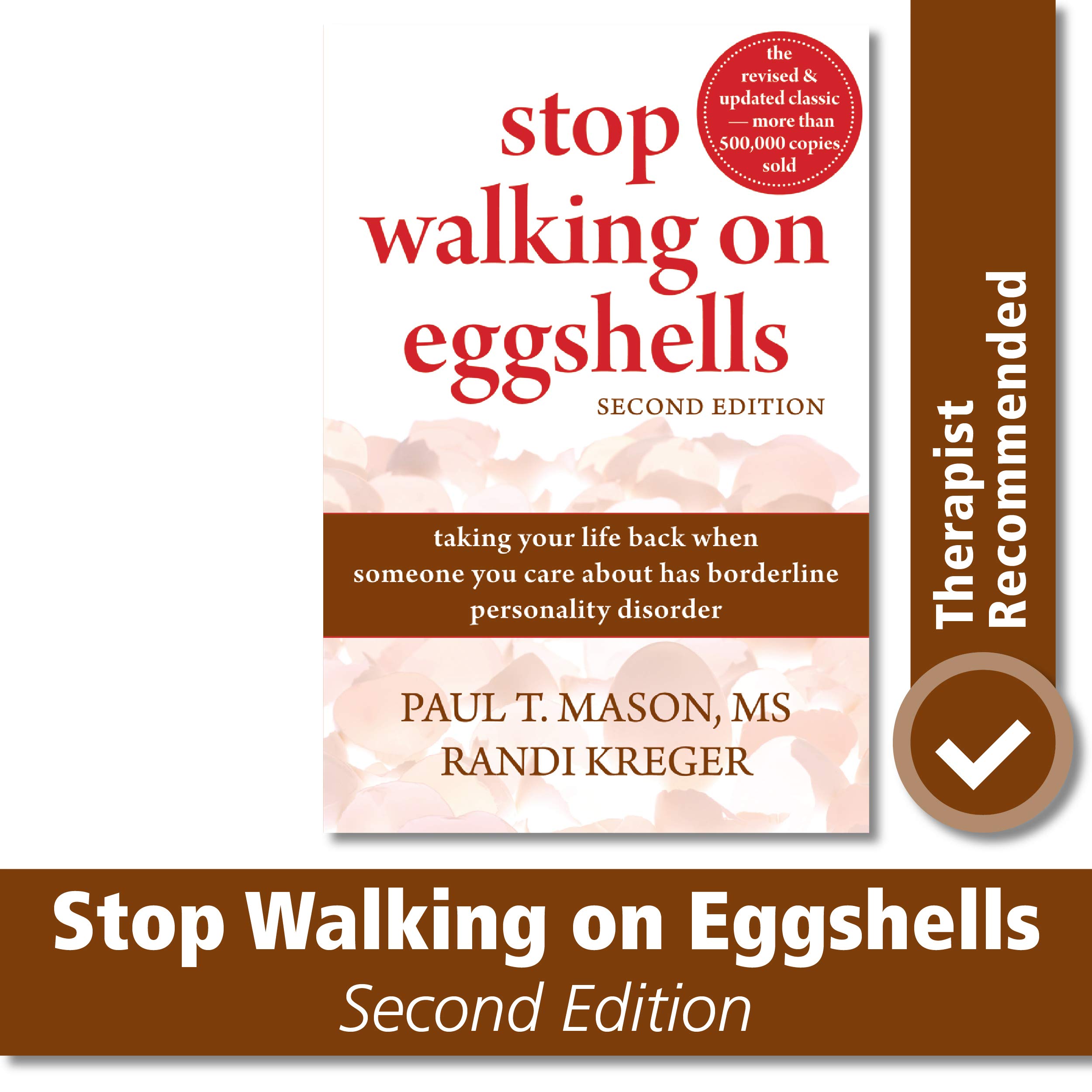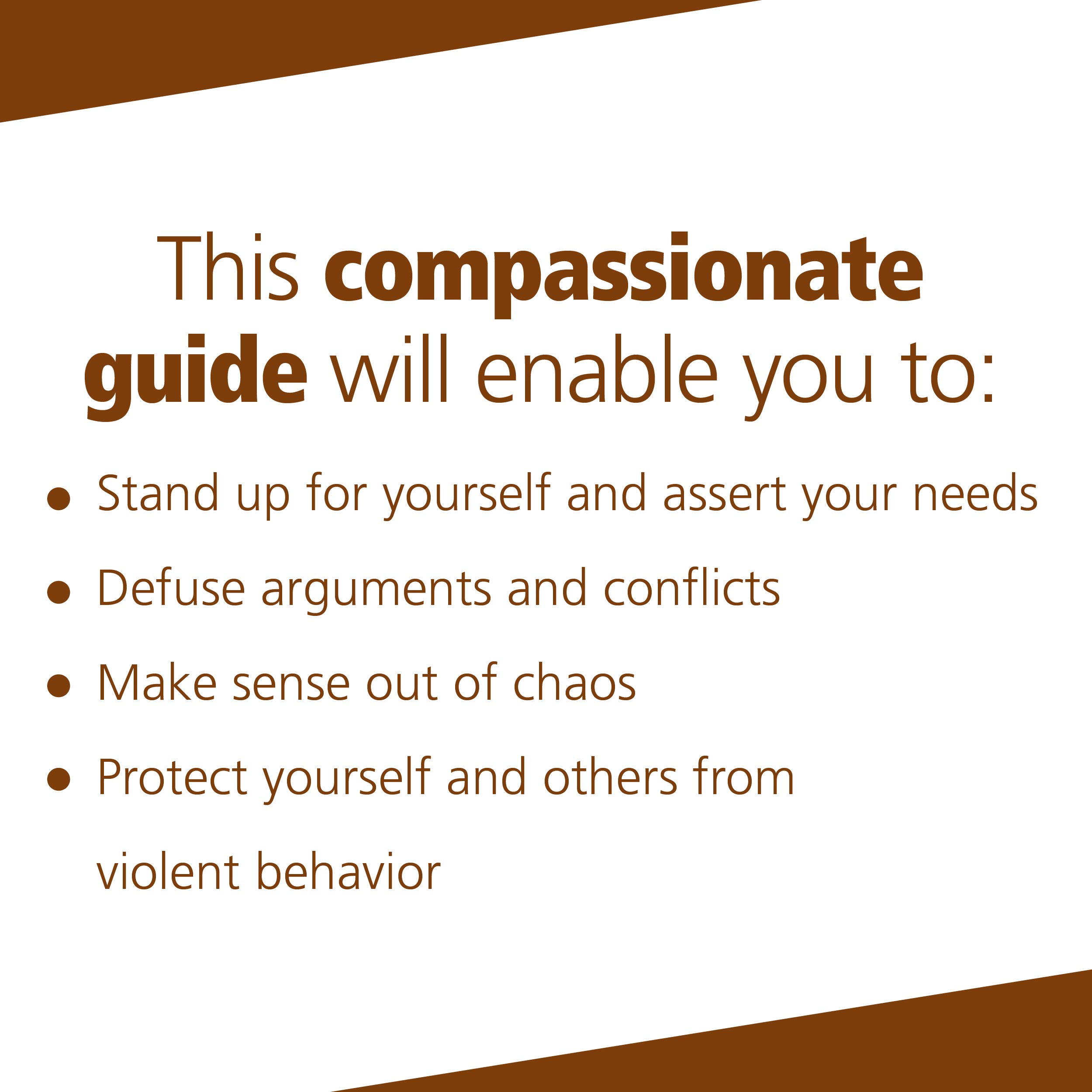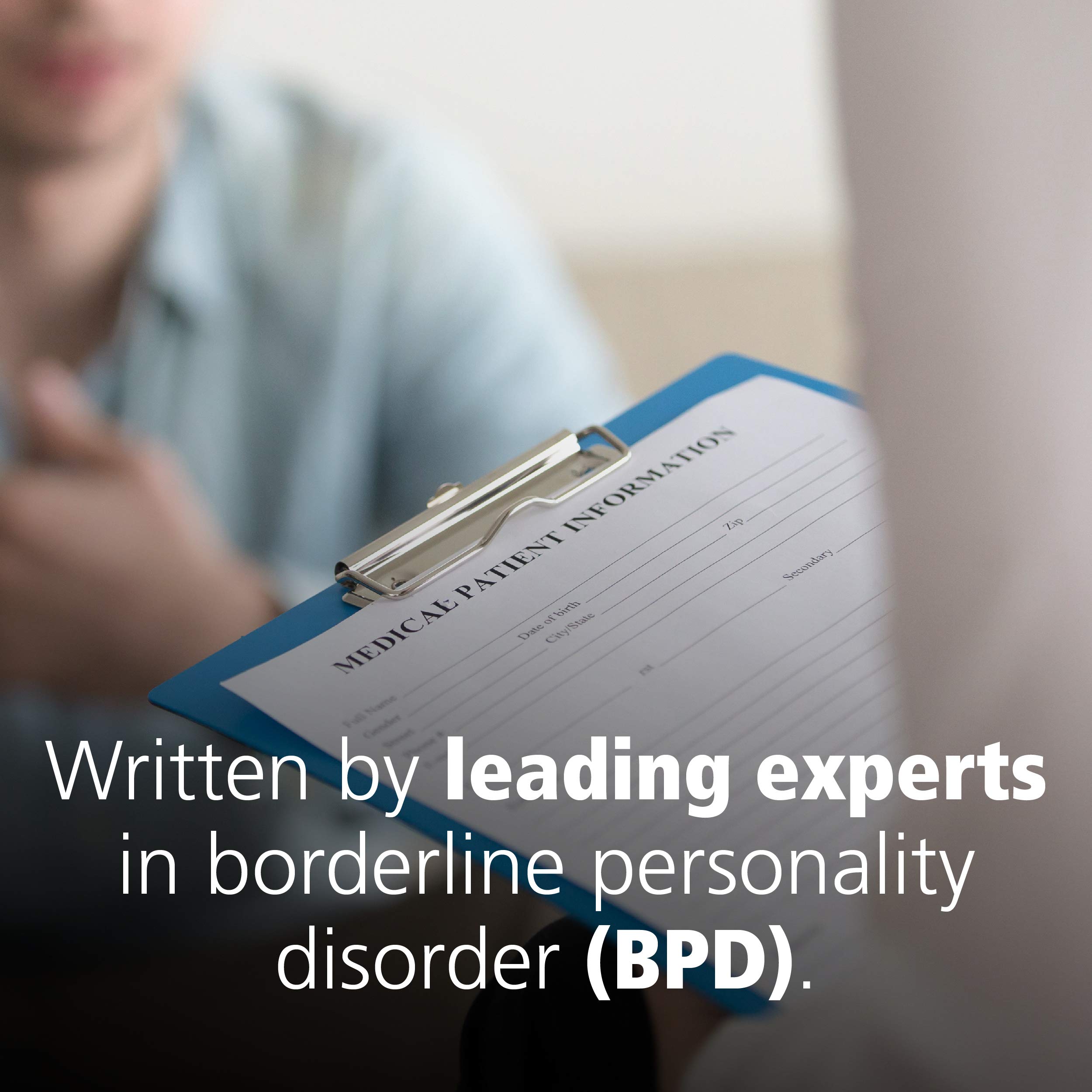-
 Thanh toán đa dạng, linh hoạtChuyển khoản ngân hàng, thanh toán tại nhà...
Thanh toán đa dạng, linh hoạtChuyển khoản ngân hàng, thanh toán tại nhà... -
 Miễn Phí vận chuyển 53 tỉnh thànhMiễn phí vận chuyển đối với đơn hàng trên 1 triệu
Miễn Phí vận chuyển 53 tỉnh thànhMiễn phí vận chuyển đối với đơn hàng trên 1 triệu -
 Yên Tâm mua sắmHoàn tiền trong vòng 7 ngày...
Yên Tâm mua sắmHoàn tiền trong vòng 7 ngày...
Stop Walking on Eggshells: Taking Your Life Back When Someone You Care About Has Borderline Personality Disorder
-

- Mã sản phẩm: 1572246901
- (5629 nhận xét)

- Publisher:New Harbinger Publications; Second edition (January 1, 2010)
- Language:English
- Paperback:288 pages
- ISBN-10:1572246901
- ISBN-13:978-1572246904
- Item Weight:13.7 ounces
- Dimensions:6.02 x 0.59 x 8.94 inches
- Best Sellers Rank:#109,512 in Books (See Top 100 in Books) #107 in Mood Disorders (Books) #141 in Personality Disorders (Books) #3,064 in Psychology & Counseling
- Customer Reviews:4.7 out of 5 stars 5,526Reviews

Mô tả sản phẩm
From the Publisher

Checklist: Does Someone you Care about have BPD?
If you answered yes to many of these questions, we have good news for you: You're not going crazy. It's not your fault. And you're not alone. You may share these experiences because someone close to you has traits associated with borderline personality disorder (BPD).
For survival tips and strategies for dealing with a loved one with BPD, read Stop Walking on Eggshells.

From the Book
Mindfulness and DBT in general help people with BPD stay off the emotional roller coaster associated with black-and-white thinking. Over time, people who regularly practice mindfulness tend to be better at enduring pain, solving problems, and not creating turmoil and stress in their lives and relationships. Notice, though, that the goal of mindfulness isn’t to experience profound happiness or a life without stress or trouble.
We all have the capacity to be mindful. It’s a skill anyone can learn. There’s nothing mysterious about it. We simply pay attention to the present moment. When mental clutter appears, we let it appear and let it fade away again. Over and over, we return to the here and now.
This isn’t usually as easy as it sounds, especially as we’re first learning it. But everyone gets better at it with practice. In the process, we also learn a lot about ourselves, others, and our relationships. Practicing mindfulness can help you achieve a better balance between your rational mind and your emotional mind. This puts you in a better position to respond wisely to distressing situations, in a balanced, healthy manner.
You’ll also make better decisions, improve your relationships, and optimize your potential for physical and mental relaxation.

The purposes of this exercise is to focus your mind on a single object and to be aware of the mental energy needed to stay in the moment.
Focus on an object
1. Find a place where you can be alone and away from TVs, radios, and other distractions and interruptions. Get into a comfortable position either sitting or standing that you can maintain for three minutes. Keep your eyes open and breathe normally.
2. Pick a nearby object that you can see clearly. This should be something you don’t have a strong feeling about a plant, a chair, a book, a cup.
3. For the next three minutes, focus your attention just on that object. If you like, look at it from multiple angles. Pick it up or run your hands over it. Smell it, if you’re so inclined. Take in all the different sensory information about it.
4. When your mind wanders off and it will simply catch yourself and return your attention to the object. This may happen several or more than several times. There’s no need to get frustrated or critical with yourself. Just keep coming back to the object.

The purpose of this exercise is to increase your awareness of your own mind and its thoughts. Over time, with practice, it will help you to not get stuck on, distressed about, or overwhelmed by a particular thought.
Watching your thoughts
1. Find a spot where you can be free of distraction or interruption. Get in a comfortable sitting position, with your feet on the floor and your back straight. (This might mean sitting forward on the front part of your chair.) Breathe normally and keep your eyes open.
2. For five minutes, don’t think or not think about anything in particular. Just watch your thoughts surface, swirl about, and float away. Don’t try to hang onto them, push them away, or judge them. Let them come and let them go.
3. If your mind wanders or gets stuck on a particular thought, just notice that and return to quietly watching your mind. If you notice yourself getting judgmental ('I’m not very good at this'. 'Why am I having such awful thoughts?' etc.), just notice your judgment and return once more to watching your mind.
4. With practice, this skill will help you avoid getting stuck in obsessive thinking or worry. Paradoxically, it will also help you better focus on important tasks, concerns, or activities doing your taxes, for example when you need to.When your mind wanders off and it will simply catch yourself and return your attention to the object. This may happen several or more than several times. There’s no need to get frustrated or critical with yourself. Just keep coming back to the object.
- Mua astaxanthin uống có tốt không? Mua ở đâu? 29/10/2018
- Saffron (nhụy hoa nghệ tây) uống như thế nào cho hợp lý? 29/09/2018
- Saffron (nghệ tây) làm đẹp như thế nào? 28/09/2018
- Giải đáp những thắc mắc về viên uống sinh lý Fuji Sumo 14/09/2018
- Công dụng tuyệt vời từ tinh chất tỏi với sức khỏe 12/09/2018
- Mua collagen 82X chính hãng ở đâu? 26/07/2018
- NueGlow mua ở đâu giá chính hãng bao nhiêu? 04/07/2018
- Fucoidan Chính hãng Nhật Bản giá bao nhiêu? 18/05/2018
- Top 5 loại thuốc trị sẹo tốt nhất, hiệu quả với cả sẹo lâu năm 20/03/2018
- Footer chi tiết bài viết 09/03/2018
- Mã vạch không thể phân biệt hàng chính hãng hay hàng giả 10/05/2023
- Thuốc trắng da Ivory Caps chính hãng giá bao nhiêu? Mua ở đâu? 08/12/2022
- Nên thoa kem trắng da body vào lúc nào để đạt hiệu quả cao? 07/12/2022
- Tiêm trắng da toàn thân giá bao nhiêu? Có an toàn không? 06/12/2022
- Top 3 kem dưỡng trắng da được ưa chuộng nhất hiện nay 05/12/2022
- Uống vitamin C có trắng da không? Nên uống như thế nào? 03/12/2022
- [email protected]
- Hotline: 0909977247
- Hotline: 0908897041
- 8h - 17h Từ Thứ 2 - Thứ 7
Đăng ký nhận thông tin qua email để nhận được hàng triệu ưu đãi từ Muathuoctot.com
Tạp chí sức khỏe làm đẹp, Kem chống nắng nào tốt nhất hiện nay Thuoc giam can an toan hiện nay, thuoc collagen, thuoc Dong trung ha thao , thuoc giam can LIC, thuoc shark cartilage thuoc collagen youtheory dau ca omega 3 tot nhat, dong trung ha thao aloha cua my, kem tri seo hieu qua, C ollagen shiseido enriched, và collagen shiseido dạng viên , Collagen de happy ngăn chặn quá trình lão hóa, mua hang tren thuoc virility pills vp-rx tri roi loan cuong duong, vitamin e 400, dieu tri bang thuoc fucoidan, kem chống nhăn vùng mắt, dịch vụ giao hang nhanh nội thành, crest 3d white, fine pure collagen, nên mua collagen shiseido ở đâu, làm sáng mắt, dịch vụ cho thue kho lẻ tại tphcm, thực phẩm tăng cường sinh lý nam, thuoc prenatal bổ sung dinh dưỡng, kem đánh răng crest 3d white, hỗ trợ điều trị tim mạch, thuốc trắng da hiệu quả giúp phục hồi da. thuốc mọc tóc biotin



























 KHUYẾN MÃI LỚN
KHUYẾN MÃI LỚN Hỗ Trợ Xương Khớp
Hỗ Trợ Xương Khớp Bổ Não & Tăng cường Trí Nhớ
Bổ Não & Tăng cường Trí Nhớ Bổ Sung Collagen & Làm Đẹp
Bổ Sung Collagen & Làm Đẹp Bổ Thận, Mát Gan & Giải Độc
Bổ Thận, Mát Gan & Giải Độc Chăm Sóc Sức khỏe Nam Giới
Chăm Sóc Sức khỏe Nam Giới Chăm Sóc Sức khỏe Nữ Giới
Chăm Sóc Sức khỏe Nữ Giới Chăm sóc Sức khỏe Trẻ Em
Chăm sóc Sức khỏe Trẻ Em Thực Phẩm Giảm Cân, Ăn Kiêng
Thực Phẩm Giảm Cân, Ăn Kiêng Bổ Sung Vitamin & Khoáng Chất
Bổ Sung Vitamin & Khoáng Chất Bổ Tim Mạch, Huyết Áp & Mỡ Máu
Bổ Tim Mạch, Huyết Áp & Mỡ Máu Bổ Mắt & Tăng cường Thị lực
Bổ Mắt & Tăng cường Thị lực Điều Trị Tai Mũi Họng
Điều Trị Tai Mũi Họng Sức Khỏe Hệ Tiêu hóa
Sức Khỏe Hệ Tiêu hóa Chăm Sóc Răng Miệng
Chăm Sóc Răng Miệng Chống Oxy Hóa & Tảo Biển.
Chống Oxy Hóa & Tảo Biển.